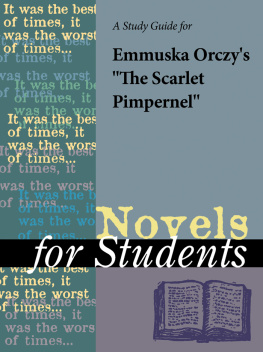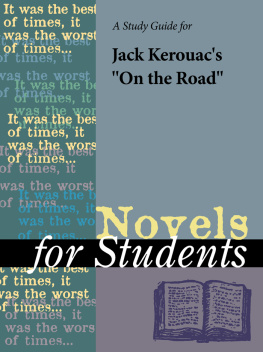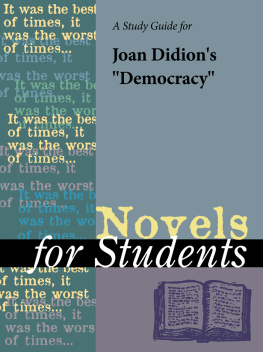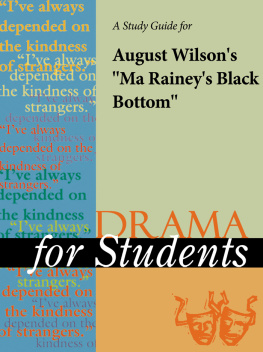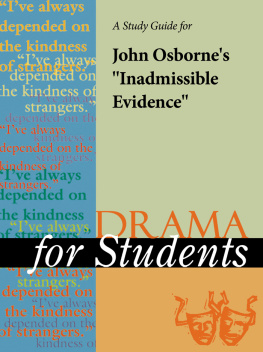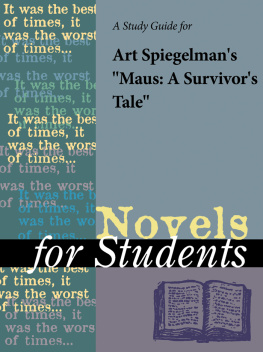TABLE OF CONTENTS
Guide
Drama for Students, Volume 4
Staff
Editorial: David M. Galens, Editor. Terry Browne, Christopher Busiel, Clare Cross, John Fiero, David M. Galens, Carole Hamilton, D. L. Kellett, Erika Kreger, Sheri Metzger, Daniel Moran, Terry Nienhuis, Arnold Schmidt, William P. Wiles, Etta Worthington, Entry Writers. Elizabeth Cranston, Catherine V. Donaldson, Kathleen J. Edgar, Jennifer Gariepy, Dwayne D. Hayes, Joshua Kondek, Tom Ligotti, Scot Peacock, Patti Tippett, Pam Zuber, Contributing Editors. James Draper, Managing Editor. Diane Telgen, For Students Line Coordinator. Jeffery Chapman, Programmer/Analyst.
Research: Victoria B. Cariappa, Research Team Manager. Andy Malonis, Barb McNeil, Research Specialists. Julia C. Daniel, Tamara C. Nott, Tracie A. Richardson, Cheryl L. Warnock, Research Associates. Phyllis P. Blackman, Jeffrey D. Daniels, Corrine A. Stocker, Research Assistants.
Permissions: Susan M. Trosky, Permissions Manager. Kimberly F. Smilay Permissions Specialist. Steve Cusack and Kelly A. Quin, Permissions Associates.
Production: Mary Beth Trimper, Production Director. Evi Seoud, Assistant Production Manager. Shanna Heilveil, Production Assistant.
Graphic Services: Randy Bassett, Image Database Supervisor. Robert Duncan and Michael Logusz, Imaging Specialists. Pamela A. Reed, Photography Coordinator. Gary Leach, Macintosh Artist.
Product Design: Cynthia Baldwin, Product Design Manager. Cover Design: Michelle DiMercurio, Art Director. Page Design: Pamela A. E. Galbreath, Senior Art Director.
Copyright Notice
Since this page cannot legibly accommodate all copyright notices, the acknowledgments constitute an extension of the copyright notice.
While every effort has been made to secure permission to reprint material and to ensure the reliability of the information presented in this publication, Gale Research neither guarantees the accuracy of the data contained herein nor assumes any responsibility for errors, omissions, or discrepancies. Gale accepts no payment for listing; and inclusion in the publication of any organization, agency, institution, publication, service, or individual does not imply endorsement of the editors or publisher. Errors brought to the attention of the publisher and verified to the satisfaction of the publisher will be corrected in future editions.
This publication is a creative work fully protected by all applicable copyright laws, as well as by misappropriation, trade secret, unfair competition, and other applicable laws. The authors and editors of this work have added value to the underlying factual material herein through one or more of the following: unique and original selection, coordination, expression, arrangement, and classification of information. All rights to this publication will be vigorously defended.
Copyright 1998
Gale Research
835 Penobscot Building
645 Griswold Detroit, MI 48226-4094
All right reserved including the right of reproduction in whole or in part in any form.
This book is printed on acid-free paper that meets the minimum requirements of American National Standard for Information SciencesPermanence Paper for Printed Library Materials, ANSI Z39.48-1984.
ISBN 0-7876-2753-4
ISSN 1094-9232
Printed in the United States of America
10 9 8 7 6 5 4
Burn This
Lanford Wilson
1987
Introduction
Burn This opened in Los Angeles, California, on January 22, 1987. Wilsons play is a contemporary romantic drama, but it is not a happy romance, and even the resolution cannot be described as entirely happy. The two romantic leads, Anna and Pale, do not find love easy, and it is not easy for the audience to witness. Early reviews of the play were mixed. Although reviewers commended Joan Allen and John Malkovichs performances, some critics questioned the credibility of an attraction between Anna and Pale. Nevertheless, the play has been generally well-received because the characters are interesting, particularly Larry, Annas homosexual roommate, who is funny and endearing. In a 1986 interview with David Savron, Wilson explained that Burn This is a love story different from any other love story because the characters do not say, I love you; they say, I dont want this. This conflict, argued Wilson, makes the love story contemporary. Wilson spent time studying modern dance so that he could incorporate the atmosphere and style into his character of Anna. Burn This is Wilsons thirty-eighth play, and he was willing to wait for nearly a year to put it on stage because he wanted John Malkovich to play Pale. He has stated that with this play he wanted to recapture the convoluted plotting of his earliest plays. Wilson relies upon dialogue to reveal the plot, and thus, the audience must pay close attention in order to follow the action. Burn This was not as commercially or critically successful as were Wilsons Talleys Folly or Hot I Baltimore, but it has been widely discussed as a depiction of a contemporary love story.
Author Biography
Lanford Wilson was born in Lebanon, Missouri, on April 13, 1937. He was five when his parents divorced. His father moved to California, and Wilson lived with his mother until 1956. Wilson attended Southwest Missouri State College from 1955 to 1956 and San Diego State College from 1956 to 1957; he planned on being an artist, although he had done some acting in high school. When he was nineteen, Wilson moved to Chicago, where he was employed as an illustrator at an advertising agency. He had been writing stories on his lunch hours and gathering rejection slips, when he suddenly realized that the story he was writing was not a story but a play. He has considered himself a playwright ever since.
Since he had no real knowledge about the writing of plays, Wilson enrolled at the University of Chicago to learn about plays and playwriting. After he moved to New York in 1962, Wilson became an active participant in the Off-Off Broadway theatre community. Several of his early plays were produced at the Caffe Cino or at La Mama Experimental Theatre, including The Madness of Lady Bright (1964) and Home Free (1964). These early one-act plays were followed by a succession of full-length works, beginning with Balm in Gilead (1965). In 1968, Wilson was a cofounder of the Circle Repertory Company, where most of his works have since premiered. Strong character development has become a hallmark of Wilsons work. His characters often exist on the fringes of society, but as the play progresses, they demonstrate that they are capable of growth and change.
Burn This (1987) is Wilsons thirty-eighth play. In a December, 1986, interview, Wilson stated that he considers Burn This to be the best work he has ever done. But he also explained that it is difficult to decide on a favorite, as his opinion sometimes changes when new productions of his works are staged. Wilson has been the recipient of several awards, including the New York Drama Critics Circle award in 1973 for




